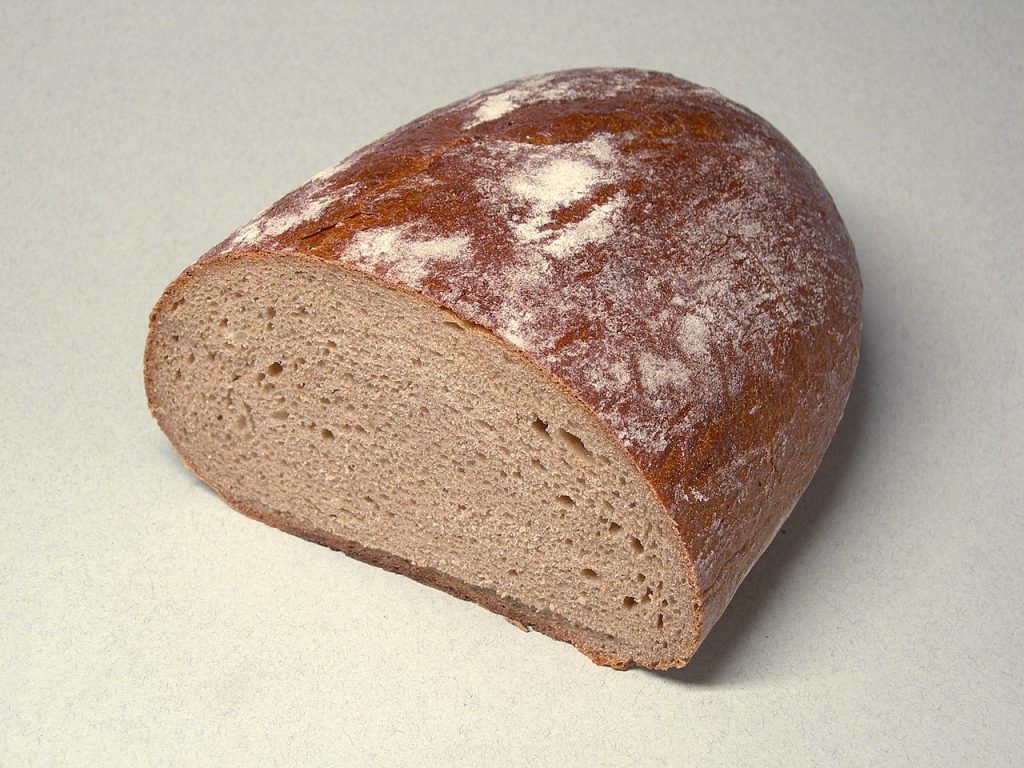Bread was historically fundamental to the traditional carb-heavy, winter-proof Czech diet. The Czech word for bread, chleba, isn’t, however, of Czech origin; it comes from the Germanic word “hlaiba” — though chleb or chleba is common among the Slavic languages, as is the vast array of sourdough bread recipes.
In the Czech Republic, where bread consumption is about 40 kilograms of bread per capita, thick slices of spongy rye-wheat-flour bread are spread with lard (škvarky) or farmer’s cheese (tvaroh) or sliced, pan-fried, and rubbed with garlic to make topinky.
PARTNER ARTICLE

Baking bread at home with a starter (kvas), a Czech culinary tradition for generations, has made a comeback in recent years thanks to the Pečem Pecen project which maps out the availability of rye-bread starters throughout the Czech Republic. A surge of interest in homemade loaves has also seen a wave of artisan bakeries finding success in Prague and beyond.
In honor of World Bread Day on October 16, 2019, these are some of the most traditional Czech breads and tips for where to try or buy them in Prague:
Classic Czech sourdough loaf (Šumava)
The traditional Czech loaf, an oval with a golden-brown crust and smooth crumb, sour to taste and redolent of caraway seed, was popularized in the 1850s by Czech baker František Serafín Odkolek whose baking empire emerged from a single mill in Kampa. It contains about 70% wheat flour and 30% rye flour and can also be flavored with onion, garlic, or pork crackling. Variations include Držkovský (named for a town outside of Liberec), Maďarský (Hungarian), Slunečnicový (sunflower), and Hostivařský (a dense loaf flavored with caraway).
Today in Prague Artic bakehouse, Nasetoustarna (specializing in rectangular loaves), and Pekárna Praktika all know their way around a crusty loaf.
Rohlík
It doesn’t get more traditional than the beloved Czech rohlik. In its purest form, accompanied by cocoa or tea, it is the ultimate Czech breakfast: soft and chewy with a neutral flavor that’s well-suited to jam and honey (and there is definitely a right and wrong way to butter your roll — flat side only, please). Variations on the traditional white roll include the longer thinner pivní rohlík (beer roll).
Where to find the best is hotly debated by locals but Antonínovo pekařství and Slovenská pekárna in the Holešovice Market Hall 22 are top contenders.
Dalamánek
The origin story of this small wheat loaf crusted with caraway comes from the 18th century when a French military garrison stationed in Vyšehrad attempted to teach a Bohemian baker how to make a baguette. They mistakenly ended up calling the crunchy wheat bread roll pain d’Allemagne or “German bread” and the name stuck with locals.
View this post on Instagram#dalamanek #breadroll #carawayseeds #sourdough #baked #fromfarmersmarket #czechpastry
A post shared by Lenka Pozarova (@lenka_fire) on
Houska
These oval-shaped, yeast buns commonly flavored with caraway or poppy seeds are also called pletýnka, literally “little braid”. Today, the rolls are more often produced by pressing as opposed to braiding. Both types are typically sprinkled with salt and seasonings, such as poppy, caraway or sesame seeds.
Any of Prague’s farmers’ markets are a great place to try traditional Czech rolls and buns, including Náplavka Saturday market at Rašínova nábřeží or Jiřího z Poděbrad Square.
View this post on InstagramA post shared by Romana Kříž Záňová (@rkz.home_food) on
Sweet yeast buns
Despite the fact that it can also be found in Austrian, Slovenian, and Hungarian cuisine, the “buchta” originated in Bohemia. It somewhat resembles an American dinner roll though instead of being slathered with a pat of butter it is typically filled with plum jam, quark, or poppy seeds and sprinkled with powdered sugar. Delicious with tea (or coffee), EMA Espresso bar is a great place for buchta and a cuppa.
View this post on InstagramA post shared by Zážitky na 4 (@zazitky_na4) on
Loupák
Also sold under the name “makovka,” this crescent-shaped roll is made from a sweet milk-based dough. It’s sprinkled with poppy seeds and brushed with egg before baking to golden-brown. A good loupák is crispy on the outside with a softy, chewy inside achieved by incorporating fat into the dough. Divine served with marmalade or Nutella, in Prague Eska is famed for its loupák (though you can’t go wrong with any of its breads).
Read more about Czech bread in this article from our archives.












 Reading time: 3 minutes
Reading time: 3 minutes 




























